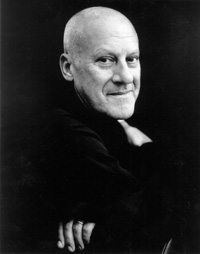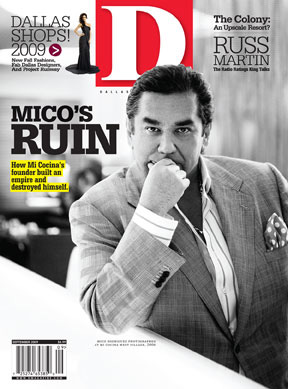In mid-19th-century Paris, Louis Napoleon and Baron Haussmann transformed the city, replacing slums and dilapidated alleyways with grand boulevards and treed promenades. Paris became the City of Light. Charles Baudelaire found this an occasion, however, to write elegiac poems for a city whose medieval mystique fell prey to capitalistic splendor. A city without its antiquities, he lamented, has no treasures.
But some treasures can be modern and still retain their mystery. Next month, one such building, Norman Foster’s Winspear Opera House, will finally unveil itself to the public. With its incarnadine core, the house looks like a gaping wound, a portal to opera’s tragedies and romances. Even considering its grand, glassy, epochal stature (with its 3-acre overhang), the house’s opaque red drum hints at memory and loss.
As a prelude to the Winspear’s opening, the Nasher Sculpture Center, itself one of Dallas’ preeminent architectural sites, welcomes an exhibit on Foster: The Art of Architecture: Foster + Partners. The second in a series on architecture (it hosted an exhibition on the Nasher’s designer, Renzo Piano, in 2006), this exhibit showcases works overseen by Foster + Partners. It’s an impressive list: Millau Viaduct in Southern France, London’s City Hall and Millennium Bridge, Berlin’s Reichstag, Beijing Airport. In all these and others, Foster’s work suggests the sublime while providing spaces that incorporate functionality, sustainability, and comfort.
The Art of Architecture divides Foster + Partners’ work into three realms: civic spaces, cultural buildings, and infrastructure projects. The Winspear is the focal point of the exhibit, and the context is chronological, looking at previous and ongoing projects that inform Foster + Partners’ ideas of the Winspear. Larger-scale models, small studies, photos of the finished site, hand-drawn sketches, and interactive video programs are on display.
As established as it has become in the past six years, the Nasher hopes the excitement of the Winspear and other arriving Arts District neighbors will make it an even stronger institution. In March, Jeremy Strick joined the Nasher as its director, renewing the Nasher at a momentous time.
Formerly director of the Museum of Contemporary Art in Los Angeles, Strick sees the Nasher as a new institution. “We’re still seeing what it’s going to be and how we’ll take it to new places,” he says. Woodall Rodgers Park will add to this re-envisioning. For him, good programming on this planned deck park is crucial to the Arts District’s future, determining the way the space is “animated.”
Jed Morse, the Nasher’s acting chief curator, notes that it’s also an opportune time to carry on Ray Nasher’s hopes for the sculpture center. “Ray’s vision was with great hopes of creating a catalyst for understanding and appreciating sculpture in the world,” he says. “His idea was that the Nasher wasn’t static, wasn’t a mausoleum. Nasher would always say, ‘It’s just the beginning.’ The Nasher has a pioneer spirit.”
That spirit translates to Dallas’ other arts patrons, he says. “Dallas has a shared community of patrons who see themselves as temporary stewards of art purchased with a greater benefit to the community. There’s no desire to duplicate each other’s collections. Instead, patrons are coordinating efforts to make the collections stronger,” Morse says. With this kind of mission, Dallas’ new cultural buildings merely formalize what the city’s spirit fosters—generosity.

As for the local arts community as it develops in tandem with Dallas’ overhaul, Morse says that patrons “at a very high level” are engaging in a grass-roots arts scene. “There’s incredibly broad support. More galleries and more experimental arts spaces like Centraltrak and La Reunion are opening. Artists are becoming much more involved to form a dynamic, local arts community.”
Strick says that, 20 years ago, artists in L.A. wondered whether they’d ever fit into its expanding museum community. Now, many of those artists find themselves on the walls of MOCA. Better museums with more public support lead to a stronger local arts community.
Baudelaire rightly bemoaned the loss of old foundations, but as Morse notes, with the Arts District’s museums and institutions, ancient masters are side by side with the youngest artists at Booker T. Washington High School for the Performing and Visual Arts. “A wonderful vision is finally being realized,” he says.
Rather than lose its underpinnings, Dallas is gaining its bearings. As Foster’s work on display at the Nasher and his ruby-like performing space on Flora Street suggest, souls adhere to bodies—private realms influence the circuit of the public. Not all new things carry their obsolescence with them.
The Art of Architecture: Foster + Partners runs September 26-January 10 at the Nasher Sculpture Center, 2001 Flora St. 214-242-5100
or www.nashersculpturecenter.org. Write to [email protected].







